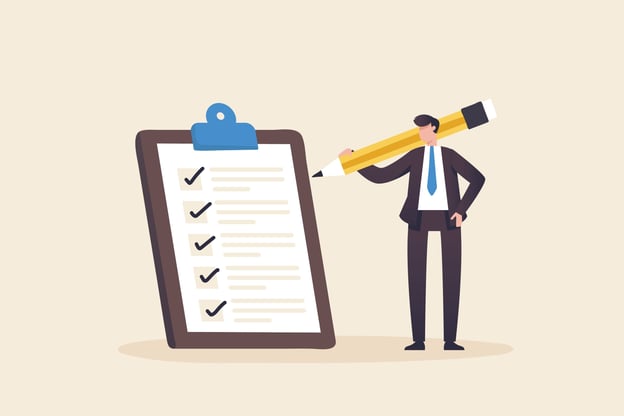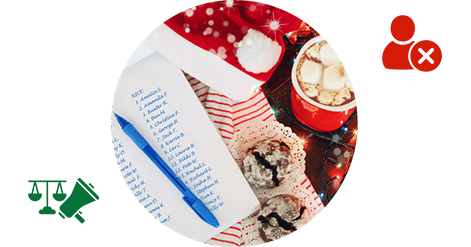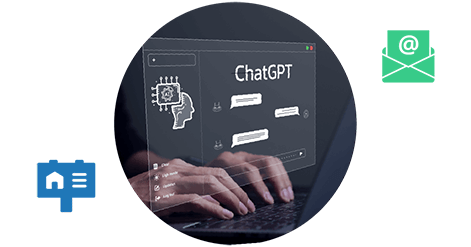What Google and Yahoo’s Email Marketing Updates Mean For You

“Google and Yahoo have just killed cold outreach!”
About a month ago, you probably saw fifty different versions of that headline everywhere you looked.
On LinkedIn, Instagram, and Youtube, all the die-hard cold email fanatics frantically declared the “death of cold email outreach” and attempted to explain what it all meant moving forward.
Except they didn't.
Obfuscated by quick cuts, loud edits, and general fear-mongering, it was difficult for anyone to really understand Google and Yahoo’s newest security and authentication updates from all the clickbait content.
Some claimed it was email armageddon.
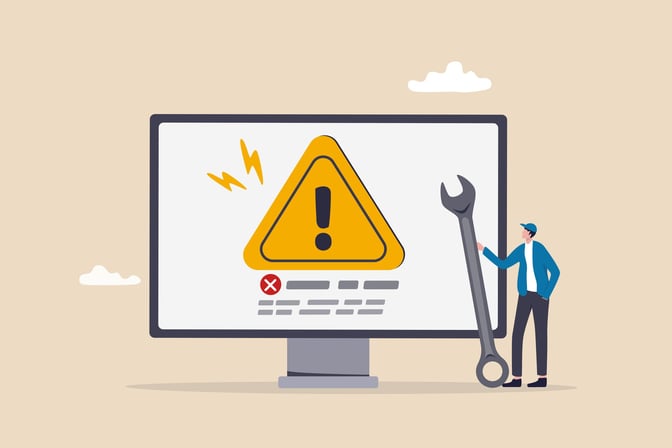
Others downplayed its impact, calling it nothing more than a tick box for email marketing managers to be aware of.
|
Read our Complete Guide To Email Marketing |
The reality of what it means for everyone who’s running email marketing campaigns?
Opportunity.
And lots of it.
That is if you embrace the changes and adapt your email marketing strategies to take advantage of the updates.
Let’s break it all down.
Understanding Google and Yahoo’s Security + Authentication Updates
Like anything that requires a complex web of rules and regulations, the language around email deliverability is full of unfamiliar abbreviations, code-speak, and jargon that (perhaps, purposely?) is meant to confuse the reader.

In this section, we’re going to break down the recent Gmail and Yahoo updates regarding security and authentication.
Be warned - there may be several things that you’ll need to read twice. Or maybe even three times.
Don’t worry, we had to as well.
Increased Security Against Phishing, Spam, and Spoofing
Last month, Google and Yahoo recently implemented stricter security measures and authentication protocols to combat phishing attacks, spam, and email spoofing.
These updates include updates to Gmail's spam protection algorithms, as well as the enforcement of email authentication standards such as SPF (Sender Policy Framework), DKIM (DomainKeys Identified Mail), and DMARC (Domain-based Message Authentication, Reporting, and Conformance).
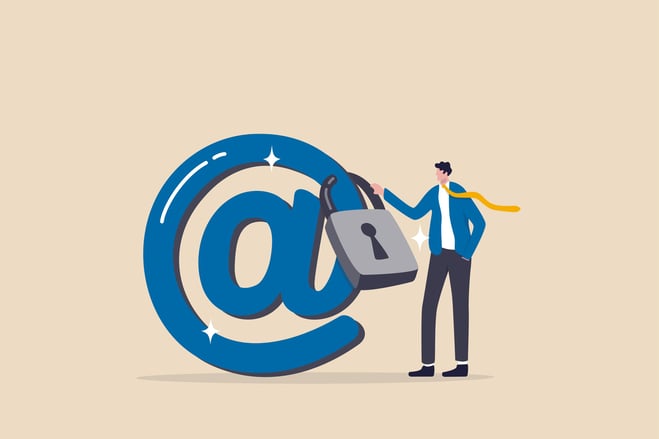
(Okay, let’s pause for some quick definitions).
SPF (Sender Framework Policy): allows senders to specify which IP addresses are authorized to send emails on behalf of their domain.
DKIM (DomainKeys Identified Mail): adds a digital signature to emails to verify their authenticity and integrity.
DMARC (Domain-based Message Authentication, Reporting, and Conformance): provides instructions to email providers on how to handle messages that fail authentication checks.
(Alright, back to it).
The most important takeaway?
It’s three parts…
-
Any senders sending emails to personal Gmail accounts, in particular those sending over 5,000 emails in a 24-hour window, are required to have rigid authentication protocols (SPF, DKIM, DMARC) in place.
-
Email senders will need to implement user-friendly practices into their emails, including one-click unsubscribe links. Google has stated that this must be in place by June 1st, 2024.
-
Spam rates must stay between 0.1% to 0.3%.
What Happens If You Fail To Comply?
Your email deliverability will take a severe hit, and you will damage your sender’s reputation.
But, fear not… there are several ways, both qualitatively and quantitatively, that you can protect yourself.
How to Set Up Your Sending Inbox to Comply With Google and Yahoo’s New Policies
Step 1: SPF Authentication
Generate a record detailing the IP addresses and domains authorized to send emails on behalf of your domain. Once you’ve validated your list,, publish it to your DNS record.
Your DNS provider will offer specific guidelines for this task (usually through your domain registrar).
Step 2: DKIM Authentication
Publish a DKIM record in your domain's DNS settings.
Setting up DKIM records involves several steps that vary depending on your email provider and DNS provider. For example, here is a link to Google’s instructions.
Step 3: DMARC Authentication
Prepare your DMARC record after establishing SPF and DKIM.
DMARC setup can be an involved process, but various resources are available to assist you.
Initially, you can utilize one of the numerous DMARC wizards to generate your DMARC record. Once done, follow your DNS provider's instructions to add or update a DNS TXT record. Again, your IT department may be of assistance.
Step 4: Configure PTR Records
If your company utilizes a mail service provider for email hosting, this is typically managed for you. However, if your company manages its email servers, ensure that the domains or IPs you send have PTR records.
Step 5: Add ARC Headers
ARC, or Authenticated Received Chain, helps improve how DKIM and SPF results are communicated from one server to another during the email forwarding process.
If you frequently utilize mailing lists or inbound gateways, consider adding ARC headers to outgoing emails.
How to Keep Your Spam Complaints Below .03%
Now that you’ve laid the technical foundation for maintaining your sender reputation with Google, it’s time to turn to the actual messaging in your emails.
Yes, the five steps above that you’ve taken to protect your domain are going to go a long way, but it doesn’t constitute 100% of the work that needs to go into staying out of the spam folder.
What your lead is seeing is just as important as how they’re receiving it in the first place.
Keeping your spam complaints near zero is an ongoing effort that takes methodical planning, consistent involvement, and continual optimization.
Like almost everything in email marketing, minimizing spam complaints is not a “set it and forget it” endeavor.
Here’s how you do it.
Step 1: Start By Taking The Good Neighbor Marketing Pledge
Good neighborly marketing helps you attract and retain customers, and it enables you to maintain a positive reputation and build lasting relationships.
We didn’t invent good neighborly marketing… but we felt so strongly about it that we created The Good Neighbor Marketing Pledge (GNMP) to help you find success and start you off on the right foot.

Taking the pledge not only allows you to be a part of a community that puts value on neighborly marketing first and foremost, but it also gives you insight into how to do it yourself.
The guidelines outlined will aid you in selecting language, adjusting your voice and tone, and ensuring everything from the words you choose to the subject line you craft is all geared toward friendly, empathetic communication that aids in solving problems...versus causing them.
Step 2: Build Highly Targeted Lead Lists and Verify Emails
With the new updates from Google and Yahoo, the “old” way of email marketing is all but over.
You know the “old” way… when you go and buy a large list of thousands and thousands of properties and homeowners and blast them with the same emails over and over.
In fact, this “spray and pray” method was so common that it was actually one of the main reasons these new updates were rolled out in the first place.
Not only is the “old” way wildly expensive and generally ineffective… it’s not good neighborly marketing.
Instead, you’ll want to build multiple highly curated lists of hyperlocal leads with demographic, situational, and financial similarities.
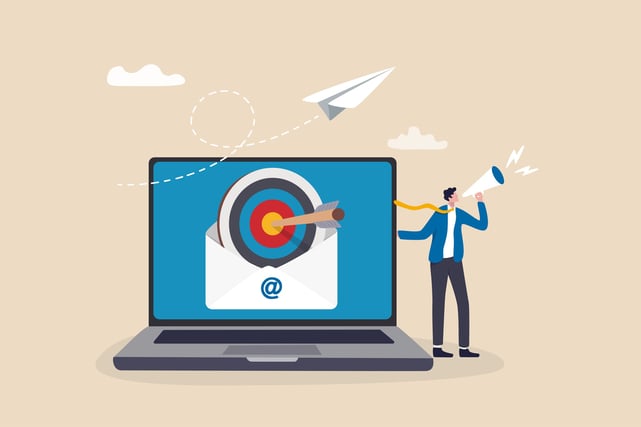
This way, you’ll be able to craft a strong message that delivers value and builds trust.
Once you have your lists, you’ll then want to run them through an email verification service, of which there are several. ZeroBounce and Reoon are some of our favorite options.
Step 3: Create Compelling Messaging That Deeply Resonates and Provides Value
Remember where we mentioned all the opportunity that comes with the new updates?
This is where it lives.
While everyone else is focused on hitting volume numbers, this is where you have the opportunity to stand out.
By taking the time to research your persona and understand their pains, wishes, and desires, you can tap into their psychology and generate messaging that resonates at a deeper level.
At the end of the day, the #1 way to keep your emails out of the spam folder is to craft real messaging with tangible value that’s communicated in a clear, concise way.

We could go all day on creating great messaging, but to keep it short, we created a checklist you can follow:
-
Keep it simple and clear: Ensure your message is concise and easy to understand.
-
Pose a burning question: Engage recipients by leaving them with a thought-provoking question.
-
Inspire action: Encourage recipients to take action based on your message.
-
Be approachable: Avoid making recipients feel targeted or uncomfortable.
-
Focus on their needs: Center your message around the recipient's needs rather than your own.
-
Maintain consistent branding: Use branding elements consistently for easy recognition.
-
Show empathy: Demonstrate understanding and empathy towards the recipient's situation.
-
Stay relevant: Address the recipient's issue without calling them out directly.
-
Provide value: Offer useful information or resources that benefit the recipient.
-
Respect privacy: Avoid disclosing personal information about the recipient.
-
Include a single clear call to action (CTA): Provide one straightforward action for the recipient to take.
-
Make the CTA obvious: Ensure the CTA stands out and is easy to spot.
-
Be inviting: Use friendly and appealing language and imagery in your message.
Step 4: Consistently Review and Test Your Messaging
“If you double the number of experiments you do per year, you're going to double your inventiveness.” - Jeff Bezos.
While this quote is from 2004, it’s just as (if not more) relevant 20 years later.
One of the biggest traps email marketers fall into is spending hours and hours crafting the perfect message for their campaign, thinking they’ll be able to send it to thousands of people over months, or even years, and have it stay just as effective as it was when they crafted it.
The problem?
“Message”, in this example, is singular.
In order to optimize and truly find what works, you’re going to need to generate and test hundreds, if not thousands, of variants against each other.

Not only will you find what message works best, you’ll be able to ensure you’re staying out of your leads’ spam folders.
Here are some ways you can test email copy:
-
A/B Testing: Split your email list into two groups and send each group slightly different versions of the email with variations in language. Analyze performance metrics to determine the version that resonates best.
-
Subject Line Testing: Test different subject lines to find ones resulting in higher open rates. Experiment with lengths, tones, personalization, and urgency to grab your subscribers' attention.
-
Headline Testing: Experiment with different headline variations within the email body to see what drives engagement. Test hooks, lengths, and tones to capture recipients' interest.
-
Body Copy Testing: Test variations in the main email body, including language, tone, length, and formatting. Monitor click-through and conversion rates to identify the most compelling version.
-
Call-to-Action (CTA) Testing: Test different CTA language, placement, size, and design to drive clicks and conversions. Experiment with action-oriented language, urgency, and incentives.
-
Tone and Voice Testing: Experiment with different tones and voices in your email copy, considering your brand personality and target audience preferences. Test formal vs. casual, humorous vs. serious, and authoritative vs. friendly tones.
-
Segmentation Testing: Test language variations tailored to specific audience segments. Segment your list based on demographics, interests, or engagement levels, and customize the language accordingly.
-
Timing Testing: Experiment with the timing of your email sends, including the day of the week and time of day. Test language variations tailored to different times to optimize engagement.
-
Feedback and Surveys: Collect feedback from subscribers through surveys or direct responses to understand their preferences. Use this feedback to refine your language testing strategies and improve email copy.
So, What Does It All Mean? Is Email Marketing Dead?
Well, let’s actually start out with what it all doesn’t mean.
The sky is not falling. It’s not email armageddon.
What it all means is you have a massive opportunity to stand out with your email marketing efforts.

Yes, it may be a forced move.
But, it’s one that, if done correctly, will help your email marketing deliver more value and generate better leads than you ever have before.
By investing the time to set up your infrastructure, ensuring you have all your acronyms (SPF, DKIM, DMARC, PTR Records, etc.) configured, taking the Good Neighbor Marketing Pledge, and creating compelling messaging for your highly targeted Lists (in PropertyRadar, of course) that you review constantly, you’re going to dominate your leads’ inboxes.
Just remember, a majority of your competitors are not going to be doing this.
They may do one or two of these things, but without an all-in approach, it’s not going to make much of a difference.
There’s never been a better time to capitalize on the opportunity to send better emails than today.
So, what are you waiting for? Get after it.
Start now with a free PropertyRadar trial to find your next hyperlocal leads and send targeted campaigns that break through the noise.
